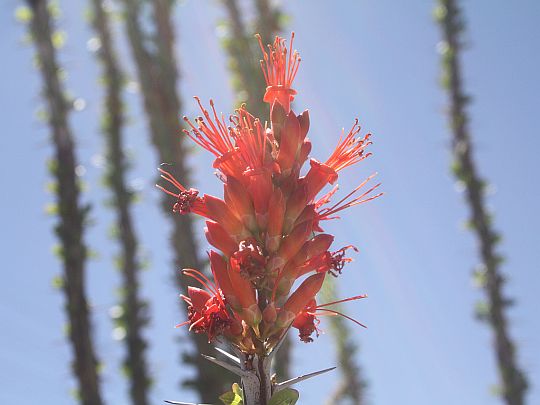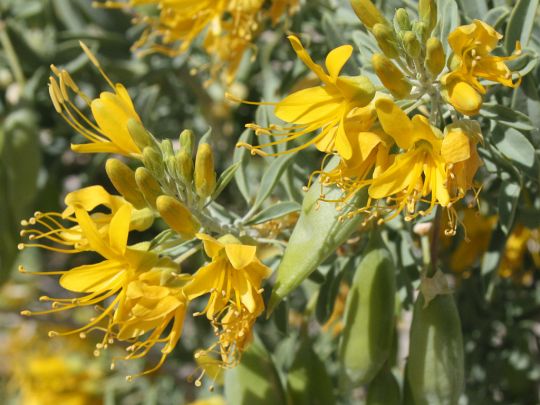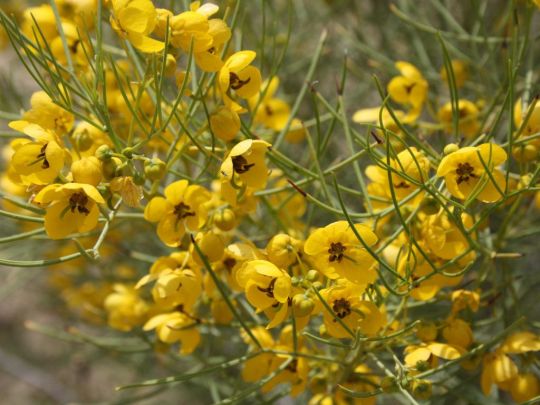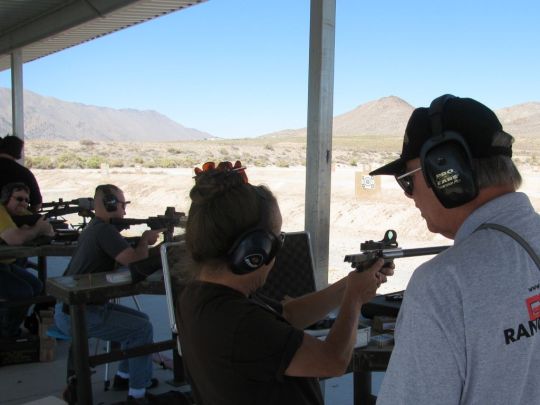Travel
Joshua Trees in Bloom
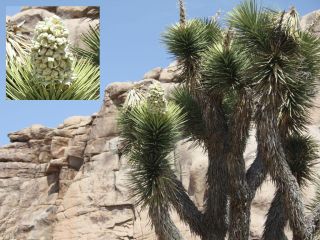 The reason we picked late March for our visit to the Joshua Tree National Park is because last time we were here, we asked a ranger the best time to see the Joshua trees in bloom. It seems to vary, but it’s a good bet that blooms will appear from late March to early April.
The reason we picked late March for our visit to the Joshua Tree National Park is because last time we were here, we asked a ranger the best time to see the Joshua trees in bloom. It seems to vary, but it’s a good bet that blooms will appear from late March to early April.
We saw a lot of them today on our way up to Keys View, a dramatic panoramic vista of the Coachella Valley and the Palm Springs area. From that vantage point, we could see the Salton Sea, Banning Pass and the San Andreas earthquake fault line.
The Joshua Trees seemed to thrive at around the 4300 foot level in the park. Many were in bloom. I took this image near some interesting rock formations which are plentiful in this area which is a domain of the Western Bighorn Sheep. Click on the image for a big view of the tree, the rocks and the inset enlargement of the bloom.
Desert Senna Flowers
Wooo Saaah – time out from the anger and frustration over health care to stop and look at the flowers. This is a picture of the flowers on the desert senna. I took this photo near the visitors center at Joshua Tree National Park today. Click on the image for a closer look.
Digital Desert has this information on the shrub that grows these flowers.
Seeds of many desert plants do not sprout easily. Some need to be passed through the digestive tracts of animals before they grow. Some, like the Desert Senna, need to be soaked by a heavy rainfall and the scoured clean of its coated resin by the rocks in a wash.
If conditions are right, golden flowers will bloom in April and May but the plant will be leafless most of the year. The Desert Senna relies on green chlorophyll in its stems to manufacture food.
GBR Flashback
I took this shot at the Gun Blogger Rendezvous last September. Mike is familiarizing Damsel with the competition pistol he uses. We recently saw him in a sequence on Downrange TV using this gun. To the left you can see Kevin and Chuck enjoying the outing. We’re expecting to attend again this year and join bloggers like Kevin, Mike and Chuck in an excursion to the shooting range. Click on the image to enlarge.
For some GBR nostalgia, go here.
Diaz Lake – A Panoramic View
Diaz Lake is located in the Owens Valley, California, It has the distinction of having recently been formed as the result of a large earthquake. Click on the panoramic thumbnail for the full-sized version.
From Wikipedia:
Diaz Lake is located just south of Lone Pine, California, United States in Owens Valley. The lake was formed by the 1872 Lone Pine earthquake when 18 mi (29 km) of the Owens Valley dropped approximately 20 feet (6 m) and a new spring opened, causing water to fill the lowland.
The lake was named for the Diaz family who established a ranch here when brother Rafael and Eleuterio Diaz emigrated from Chile in the 1860’s. They owned and operated a successful cattle ranch until the land was sold to the city of Los Angeles.
Year-round fishing is available, and the “Diaz Lake Fish Derby” is held the first Saturday in March.
Apache Junction
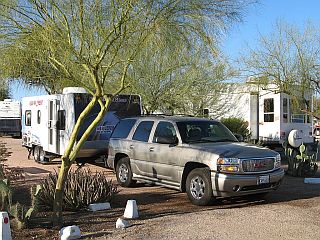 While on our recent vacation to Arizona, we noticed that most of the campers were from cold places – classic snowbirds – most of which appeared to be retired. We felt right at home among them – they were friendly, and in some cases, helpful. As I was hitching the trailer, one nice gent offered to give me a welcome hand.
While on our recent vacation to Arizona, we noticed that most of the campers were from cold places – classic snowbirds – most of which appeared to be retired. We felt right at home among them – they were friendly, and in some cases, helpful. As I was hitching the trailer, one nice gent offered to give me a welcome hand.
Image – Camping in Wintertime Arizona – Click to enlarge.
This picture shows our campsite in the Apache Junction KOA. Apache Junction is a community just on the eastern edge of the Phoenix Metroplex. The Superstition Mountains are just east of the campground, providing a spectacular view.
I can see why lots of retirees invade this place in the winter months. Arizona has a very mild climate in the southern half of the state. The camping is nice and the people – both locals and other campers – are great.

